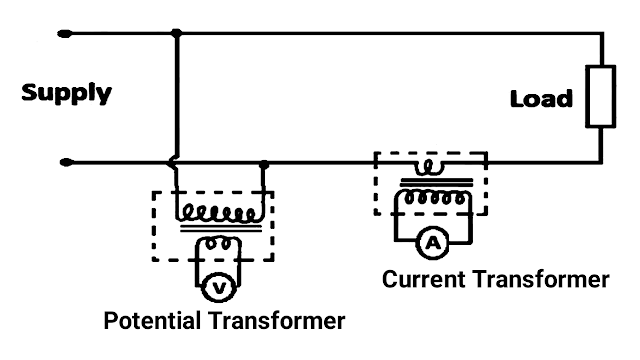What is a Instrument Transformer?
What is a Instrument Transformer?
Instrument Transformers
Basically this Transformers used in conjunction with measuring instruments like current, voltage, power, frequency, power factor are called instrument transformers and it is used in AC system. And these transformers are used to provide isolation between the power circuit and the control circuit. These transformers are also used in conjunction with protective relays. Instrument transformers are of two types. they are, A current transformer measures high current and a potential transformer measures high voltage. Instrument transformers are also used with protective relays for power system protection. Commonly instrument transformers are used to step down AC system voltage and current. And this voltage and current level of the power system is very high. Designing measuring devices to measure such high levels of voltage and current is very difficult and expensive. The measuring instrument is generally designed for 5 A and 110 V.
Types of Instrument Transformers
Current Transformer
Basically current transformer is also known as CT and current transformer is used to measure high current. Basically it is a step up transformer. It converts high current into low current. The primary winding of a current transformer consists of a few turns (sometimes a single turn) to carry the current to measure. And a small voltage exists across its input terminals because it is connected in series with the supply. and the CT primary winding carries full line current. This primary current is independent of secondary circuit conditions. Also the CT secondary winding consists of more turns of thin wire and is connected to the lower range ammeter. And the CT's secondary should never be operated in open circuit condition. CT secondary should always be shorted to avoid high voltage induction in multi turn secondary. A current transformer can be treated as a series transformer under short circuit conditions.
Potential Transformer
Potential transformer is also known as PT and this transformer is used to measure high voltage. It is basically a step down transformer and it steps down a high voltage to a low voltage. The primary winding of a potential transformer consists of a large number of turns of fine wire and is connected to the voltage to be measured, and the primary winding of this transformer is affected by the full line voltage. and the full line voltage appears at its input terminals. This primary current depends on the condition of the secondary circuit. And its secondary winding consists of a few turns of thick wire and is connected to a low range voltmeter. The secondary of PT is used in almost open circuit conditions. The secondary winding should be fully insulated from the high voltage primary and should be grounded for safety purposes. A potential transformer can be treated as a parallel transformer under open circuit conditions.
Advantages of Instrument Transformers
- Larger voltages and currents of AC power systems can be measured using smaller rating measuring instruments such as 5 A and 110 - 120 V.
- Instrument transformers provide electrical isolation in high voltage power circuits and measuring instruments.
- Instrument transformers reduce the need for electrical insulation for measuring instruments and protective circuits and ensure operator safety.
- Power loss in instrument transformers is very low.
Disadvantages of Instrument Transformers
- Instrument transformers cannot be used in DC systems

Comments
Post a Comment